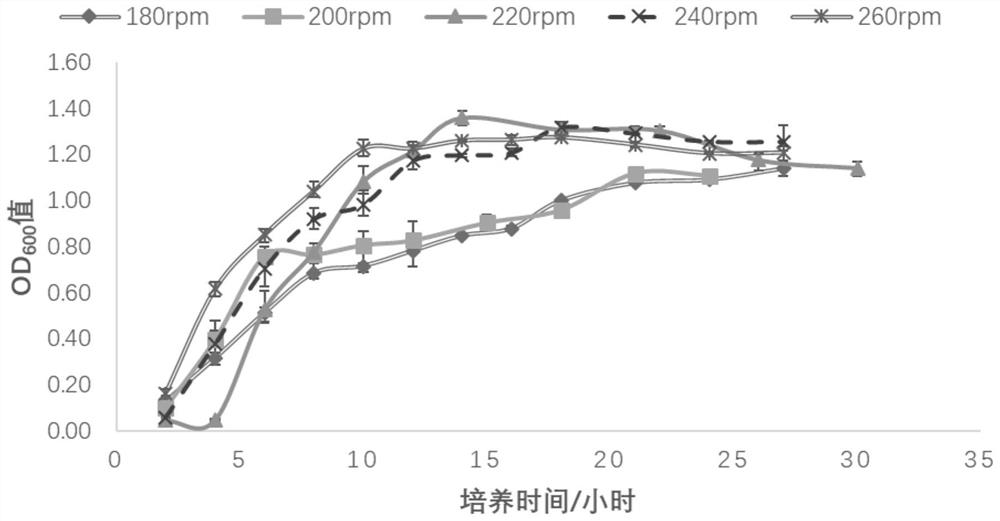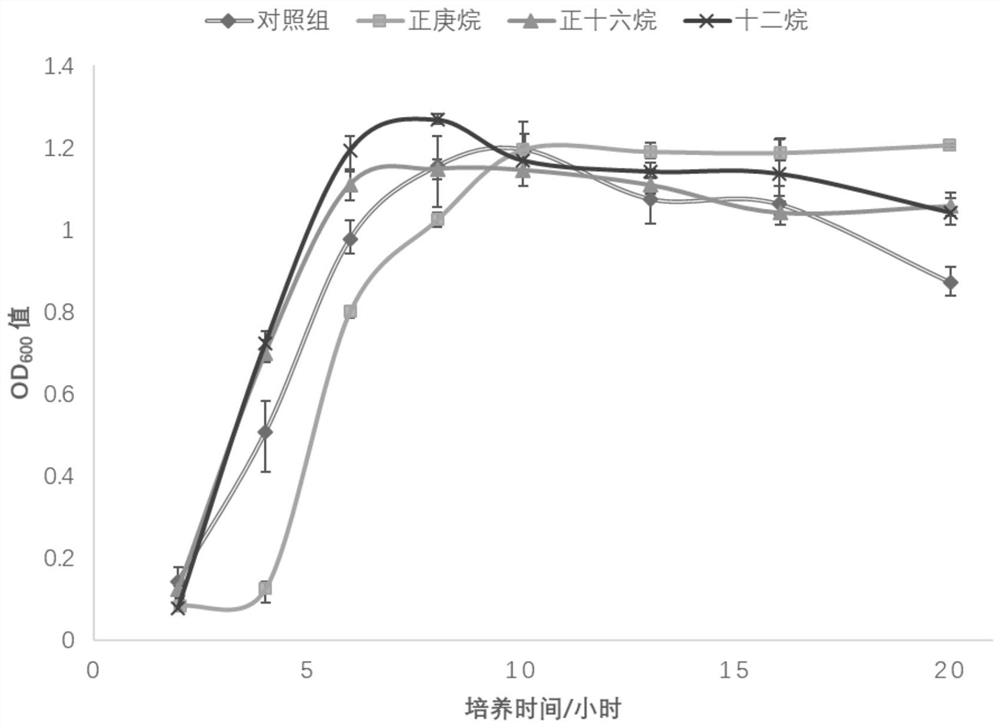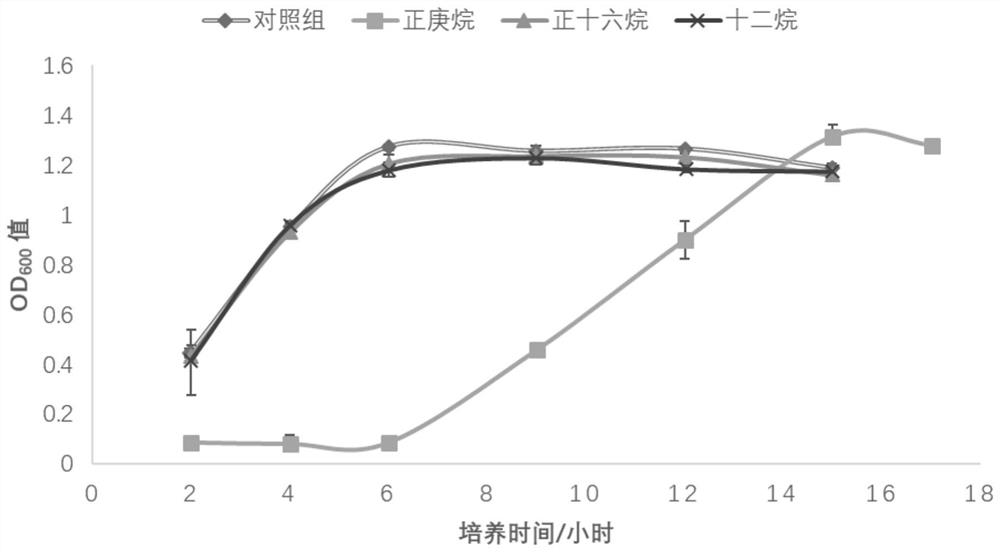A kind of high-efficiency fermentation method of aflatoxin degrading bacteria
An aflatoxin and fermentation method technology is applied in the field of high-efficiency fermentation of aflatoxin-degrading bacteria, which can solve the problems of increasing production cost, increasing energy consumption, etc. Effect
- Summary
- Abstract
- Description
- Claims
- Application Information
AI Technical Summary
Problems solved by technology
Method used
Image
Examples
Embodiment 1
[0027] (1) Strain cultivation: Before the experiment, the strains were taken out from the refrigerator, kept warm with crushed ice, and an appropriate amount of strains were picked up with sterilized bamboo sticks or pipette tips and inoculated on LB agar medium, and cultivated in a 37°C incubator for 12- 24 hours to activate the strains, and when colonies are formed, pick a single colony with a sterilized bamboo stick and inoculate it on a new LB agar medium, and cultivate it in a 37°C incubator for 12-24 hours before use;
[0028] (2) Preparation of seed solution: pick a single colony from the secondary transformation medium with a sterilized bamboo stick and inoculate it into LB medium, and cultivate it at 37°C and a shaker speed of 180rpm for 12h to obtain a seed solution;
[0029] (3) Gradient experiment of the oxygen supply condition of the strain: the seed solution was inoculated into the LB medium (250mL Erlenmeyer flask, liquid volume 50mL) at a ratio of 2% by volume f...
Embodiment 2
[0033] (1) Strain cultivation: Before the experiment, the strains were taken out from the refrigerator, kept warm with crushed ice, and an appropriate amount of strains were picked up with sterilized bamboo sticks or pipette tips and inoculated on LB agar medium, and cultivated in a 37°C incubator for 12- 24 hours to activate the strains, and when colonies are formed, pick a single colony with a sterilized bamboo stick and inoculate it on a new LB agar medium, and cultivate it in a 37°C incubator for 12-24 hours before use;
[0034] (2) Preparation of seed solution: pick a single colony from the secondary transformation medium with a sterilized bamboo stick and inoculate it into LB medium, and cultivate it at 37°C and a shaker speed of 180rpm for 12h to obtain a seed solution;
[0035] (3) Selection of oxygen-carrying agent types and comparison of addition amount: Three hydrocarbons were selected as the screening objects of oxygen-carrying agents: n-hexadecane, dodecane, and n-...
Embodiment 3
[0040] (1) Strain cultivation: Before the experiment, the strains were taken out from the refrigerator, kept warm with crushed ice, and an appropriate amount of strains were picked up with sterilized bamboo sticks or pipette tips and inoculated on LB agar medium, and cultivated in a 37°C incubator for 12- 24 hours to activate the strains, and when colonies are formed, pick a single colony with a sterilized bamboo stick and inoculate it on a new LB agar medium, and cultivate it in a 37°C incubator for 12-24 hours before use;
[0041] (2) Preparation of seed solution: pick a single colony from the secondary transformation medium with a sterilized bamboo stick and inoculate it into LB medium, and cultivate it at 37°C and a shaker speed of 180rpm for 12h to obtain a seed solution;
[0042] (3) The effect of oxygen-carrying agent addition time on fermentation: add 1% of the three oxygen-carrying agents at the time of inoculation and after 4 hours of cultivation, culture for about 24...
PUM
 Login to View More
Login to View More Abstract
Description
Claims
Application Information
 Login to View More
Login to View More - R&D
- Intellectual Property
- Life Sciences
- Materials
- Tech Scout
- Unparalleled Data Quality
- Higher Quality Content
- 60% Fewer Hallucinations
Browse by: Latest US Patents, China's latest patents, Technical Efficacy Thesaurus, Application Domain, Technology Topic, Popular Technical Reports.
© 2025 PatSnap. All rights reserved.Legal|Privacy policy|Modern Slavery Act Transparency Statement|Sitemap|About US| Contact US: help@patsnap.com



